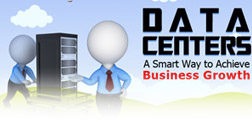-
 About us
About us
-
 Services
Not Sure what’s right for your business?
Services
Not Sure what’s right for your business? Talk to
Experts
Talk to
Experts
- Dedicated Servers
- VPS Hosting
- Cloud Hosting
- Server Colocation
-
Data
Center
- Data Centers
- Data Center India
- Data Center Delhi
- Data Center Noida
- Data Center Bangalore
- Data Center Jaipur
- Data Center Chennai
- Virtual Data Center
- Tier 3 Data Center India
- Services
- Data Center Migration
- Data Center Outsourcing
- Data Center Consolidation
- Hardware as a Service
- Data Center Optimization
- Managed Firewall Services
- Security
- Managed Firewall Services
- Managed Security Services
- Web Application Firewall
- SSL Certificates
- DdoS Mitigation
- Disaster Recovery
- DraaS
- DR on Cloud
- BCDR
- Backup as a Service
- Infrastructure Management
- Email Hosting
-
 Platforms
Platforms
-
 Resources
Resources
 Blog
Blog
 Live Chat
Live Chat
- [email protected] +91-120-6025102
What Is The Difference Between Traditional Data Centers And Cloud?
In today's digital landscape, businesses have multiple options when it comes to storing data and running applications. Two of the most common options are traditional data centers and cloud computing. Both offer valuable services, but they differ significantly in terms of architecture, cost, flexibility, and scalability. Understanding these differences can help businesses make informed decisions about their IT infrastructure. Traditional Data Centers: A traditional data center refers to a physical facility that organizations build, own, and manage to house their servers, storage devices, and network equipment. These data centers are typically on-premise, meaning the hardware is located in the organization's building or leased space. Cloud: The cloud is an internet-based computing service that allows businesses to rent virtual servers, storage, and applications from cloud service providers (e.g., Amazon Web Services, Microsoft Azure, Google Cloud). In the cloud, the infrastructure is hosted off-site and can be accessed via the internet, eliminating the need for on-premise hardware. Traditional Data Centers: The organization owns, operates, and maintains the entire infrastructure, including servers, storage, networking hardware, and security systems. The company is responsible for capital expenditures (CapEx) to purchase and upgrade hardware. Cloud: With cloud computing, the infrastructure is owned and maintained by a third-party provider. The organization only pays for the services it uses on a subscription or pay-as-you-go basis, meaning there is no upfront investment in physical hardware. Traditional Data Centers: The cost of setting up and maintaining a traditional data center is high. It includes initial setup costs for hardware, software, and networking equipment, as well as ongoing expenses for power, cooling, and IT staff. Organizations also need to allocate resources for system upgrades and disaster recovery. Cloud: The cloud is more cost-efficient in terms of capital expenditure since you don't need to purchase hardware. Costs are typically operational expenses (OpEx), and you pay only for the resources you use. This model provides more predictable pricing based on usage and helps businesses avoid large upfront costs. Traditional Data Centers: Scaling a traditional data center can be time-consuming and expensive. When a company needs more storage or processing power, it must purchase and install additional hardware, which can involve delays and added costs. Cloud: Cloud services are highly scalable. You can increase or decrease your resources as needed within minutes. Providers offer flexible solutions that can be quickly adjusted based on business demands. This is ideal for businesses with fluctuating workloads or rapid growth. Traditional Data Centers: Maintenance and management of traditional data centers require dedicated IT staff to oversee the hardware, software, and network components. These staff are also responsible for troubleshooting, patching systems, and ensuring uptime. Cloud: Cloud providers handle all maintenance, upgrades, and security patches. The responsibility for hardware and infrastructure management falls on the provider, which frees up internal teams to focus on higher-value tasks. However, the organization still needs to manage its applications and data security in the cloud. Traditional Data Centers: Security in traditional data centers is primarily managed by the organization. Physical security measures like access controls, surveillance cameras, and biometric scanning are typically used to protect hardware from unauthorized access. The organization is also responsible for network security, firewalls, and data encryption. Cloud: Cloud providers implement robust security measures to protect their infrastructure, such as encryption, firewalls, and 24/7 monitoring. However, security responsibilities are shared between the provider and the customer. The provider secures the infrastructure, while the customer manages data security and access controls at the application level. Traditional Data Centers: Building a disaster recovery plan for a traditional data center can be expensive and complex. It may require additional facilities, backup power, off-site storage, and additional IT resources to ensure that business operations continue in the event of a disaster. Cloud: The cloud provides built-in disaster recovery capabilities. Most cloud providers offer automated backups and geographic redundancy, meaning data is replicated across multiple locations. In case of failure in one region, the system can switch to another region with minimal downtime. Traditional Data Centers: Access to a traditional data center is typically limited to employees who are on-site or connected through a VPN. These data centers are less flexible in terms of remote access. Cloud: The cloud offers global accessibility, allowing employees to access data and applications from anywhere with an internet connection. This enhances mobility and collaboration, particularly for organizations with remote or distributed teams. Traditional Data Centers: Traditional data centers consume a significant amount of energy for operations and cooling. Many organizations are taking steps to reduce their environmental impact by implementing energy-efficient practices, but they still tend to have a larger carbon footprint due to their on-premise nature. Cloud: Cloud providers often have more resources and expertise to operate energy-efficient data centers. They can invest in green technologies such as renewable energy sources, which allows them to reduce their environmental impact more effectively. Traditional Data Centers: Ideal for businesses that need full control over their infrastructure, have specific regulatory or compliance needs, or have stable workloads. They are typically used by large enterprises with significant capital to invest in IT infrastructure. Cloud: Best suited for businesses with dynamic, growing, or variable workloads. The cloud is especially beneficial for startups, SMBs, and organizations that require flexible, on-demand resources and want to avoid the upfront costs of building and maintaining a data center. Both traditional data centers and cloud computing offer valuable benefits, but they serve different needs. Traditional data centers are better suited for businesses that require total control over their infrastructure and have the resources to manage it. Cloud computing, on the other hand, is more cost-effective, scalable, and flexible, making it ideal for businesses looking to reduce costs and streamline their IT operations. Understanding the differences between the two can help organizations choose the best solution based on their needs, budget, and growth potential.1. Definition
2. Infrastructure Ownership
3. Cost
4. Scalability
5. Maintenance and Management
6. Security
7. Disaster Recovery
8. Flexibility and Accessibility
9. Environmental Impact
10. Use Cases
Conclusion
Was this answer helpful?
 0
0
 0
0
 0
0
 0
0
Related Questions
- What is a Data Center?
- What is Data Center Tiers?
- What Are the Exact Versions of Your Current Unix/Linux Offerings?
- How Can I Backup My Databases Myself ?
- Trusted and Untrusted Network
- Important Points To Consider After Purchasing Data Center Services.
- Who Should Use Shared Server
- What Are The Uses Of Control Panel
- Avail Go4Hosting Data Center Infrastructure and Manage Your Business
- A Complete Guide to know About Data Centers in India
- Is an AI Data Center More Cost-Effective in the Long Run?
- How to Optimize AI Workloads in Data Centers
- HTTPS Port: Understanding What It Is and How to Use It
Submit your Query
 Browse by Services
Browse by Services
- Dedicated Server Hosting
- Dedicated Server Pricing
- Linux Dedicated Server Hosting
- Windows Dedicated Server
- Offshore Dedicated Server
- Plesk Dedicated Server
- Server Rental
- Cloud Hosting India
- Linux Cloud Hosting
- Windows Cloud Hosting
- Cloud Storage Pricing India
- Cloud CDN
- Cloud Migration Services
- SSD Hosting India
- Video Streaming Server
- VPS Hosting India
- Linux VPS Server Hosting
- Buy Windows VPS Hosting
- Ubuntu VPS
- Best Forex VPS
- Buy VPN
- Email Server Hosting
- Zimbra Email Hosting
- Reseller Hosting
- Linux Reseller Hosting
- Windows Reseller Hosting
- Shared Hosting Plans
- Linux Shared Hosting
- Windows Shared Hosting
- Others
- Buy VPS
- Colocation Service India
- Sap Hana Hosting
- SSL Certificate Price India
- Wordpress Hosting India
- Disaster Recovery Services







 Blogs
Blogs